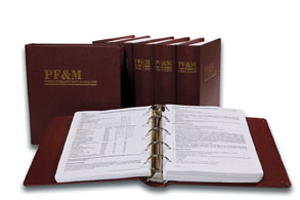|
PF&M at a Glance Commercial general liability coverage
Lawsuit protection, customer satisfaction coverage, preserving the company’s assets insurance—all could be appropriate names for commercial general liability coverage. The liability exposure is the unknown risk every business faces. Since accidents can and do happen, even the best run business can face bankruptcy every time a customer walks through its door. People walk, children climb, teenagers eat—any activity can result in an accident, and how and where that accident occurs can determine the financial health of a business. Liability insurance is designed to allow the owners of a commercial enterprise to continue concentrating on their business plan, knowing that they have insurance to protect against the unforeseeable. The CGL can be offered either on an occurrence basis or a claims made basis. It can be written either as a monoline policy or in connection with one or more other lines of insurance to form a commercial package policy. Instead of having to select specific areas of coverage (which may result in gaps in an insurance program), the insured enjoys fairly comprehensive liability coverage. The basic exposures covered by the CGL include: Section I of the form provides three distinct coverages: Each coverage is described in Section I of the policy with an insuring agreement, exclusions and supplementary payment information. The following sections apply to all three of the coverages named above: • Section II describes who is an insured. A number of individuals are covered as insureds but only with respect to the named insured’s business. • Section III explains the application of the various limits of insurance and how they work together. • Section IV describes the conditions that are specific to general liability coverage. Many of these conditions explain the responsibilities of the insured after a loss. If the insured violates these conditions, coverage can be voided, so careful attention to this area is warranted. • Section V covers definitions for certain words and phrases used in the coverage part. These definitions are not the same as the ones found in a dictionary. The important part of every definition section is the coverage that is provided and the coverage that is excluded by a definition. The CGL coverage form has many endorsements available to tailor the coverage for a particular exposure situation. Some of the endorsements are mandatory for specific classifications while others are optional. The optional endorsements allow the insured to sculpt coverage to fit an individual need. This flexibility allows a standard form to become custom-made coverage. The CGL has no limitations on the types of risks that can be written on a monoline policy or a commercial package program. Certain types of risks or classifications, however, may not be combinable with other coverage lines and therefore would not qualify for a commercial package policy discount. These include personal liability and farm liability risks. Also, some specific property programs cannot be combined with any other line for a package policy discount. These include highly protected risks (HPR), petroleum properties, petrochemical plants, electric generating stations and natural gas pumping stations. Underwriting and rating commercial general liability coverages must start with thorough exposure identification. Since coverage follows the named insured operations on and off premises, underwriting efforts must concentrate on defining who is/are the named insured(s) is and what the named insured(s) do/does. All rating and underwriting decisions flow from the answers developed in this exploration effort. Please note that this is only an overview of this coverage. A thorough discussion of this coverage form may be found in the PF&M Analysis from The Rough Notes Company. Agency OnLine subscribers, please refer to PF&M Section 270.4-2 - Commercial General Liability Coverage Form Analysis for a more in-depth discussion of this coverage part. * |
|
|



